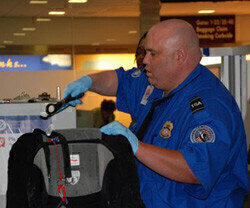Industrial News
Meet the Cocaine Detecting Gloves That Are Putting GC-MS to Shame
Mar 09 2016
Cocaine is one of the most widely used illegal drugs with large profits made by dealers and traffickers — it was rumoured that the Colombian drug cartels could afford to pay off all of Columbia’s national debt, a sum of $13 billion.
Although it is a difficult battle, the police and drug agencies continue to try and stop the transportation of cocaine and other drugs across borders and into our towns. Chromatography has long played a role in detecting cocaine as discussed in the article, Evaluation of Evaporative Sample Preparation Techniques for the Extraction of Drugs of Abuse from Urine Samples by Forensic Science Ireland. But the job could soon become a whole lot simpler — just by putting your gloves on.
Current drug detection
When a customs officer wants to test for the presence of cocaine — in someone’s luggage for example — the most common method is to try the colour test. This is a simple swab type test where an officer would take a small sample of the powder or wipe a cotton bud where they suspect they might detect cocaine — and then mix it with a simple chemical solution. For cocaine, it is usually a cobalt thiocyanate solution which will turn blue if cocaine is present. But this test is not classed as an identification test — it can only suggest that a drug might be present.
If the drug’s officer gets a positive result with the colour test they will have to carry out further tests which usually include gas chromatography allied with mass spectrometry. These are confirmatory tests that give a positive identification to the powder or drug. But these are expensive to set up and maintain and allied to the fact they aren’t portable limits their use.
But a team from Belgium and California have been working on a system that could fit the task of drug detection perfectly — just like a glove in fact.
Cocaine detection that fits like a glove
The principle behind the new test — published in the journal Chemical Science — lies in a principal that chemistry students are taught in high school. Cocaine is a redox active molecule, which means that when a potential — think of a battery and electrolysis — is applied to cocaine, it is oxidised or reduced. In cocaine’s case, it is oxidized as it loses electrons.
The team were able to measure the voltammetric response of not only cocaine — but also the usual cutting agents it is combined with. The sensor developed by the team has been embedded in a glove meaning that the drug tester simply has to rub their thumb and finger together to analyse a sample and identify cocaine and its cutting agents.
With the ability to carry out street and on-site drug testing by putting on gloves — the war against drugs might become a little easier.
Image from Wikimedia commons
Digital Edition
Chromatography Today - Buyers' Guide 2022
October 2023
In This Edition Modern & Practical Applications - Accelerating ADC Development with Mass Spectrometry - Implementing High-Resolution Ion Mobility into Peptide Mapping Workflows Chromatogr...
View all digital editions
Events
Jan 20 2025 Amsterdam, Netherlands
Feb 03 2025 Dubai, UAE
Feb 05 2025 Guangzhou, China
Mar 01 2025 Boston, MA, USA
Mar 04 2025 Berlin, Germany












